media garden 04. on selfhood, sleeping beauty, and postmodernism
a curated collection of articles, books, movies, video essays, and music I've enjoyed recently
happy march!
its been a while since i posted a collection of my media consumption, so i thought i’d treat you guys to a lot more content than usual! there’s lots of media ranging from all sorts of topics—lost languages, freud’s consulting room, post-apocalyptic ice-age worlds, sensual retellings of classic fairytales, and more!
one thing i do want to say is that i hope you’ll give all the content here a chance, even if the topic doesn’t seem like something you would enjoy. the media i put in these is things i’ve personally found, consumed, and enjoyed; i make these posts because i believe others would enjoy them too and want to share! so even if an article doesn’t sound necessarily interesting to you or a movie is a genre you don’t usually enjoy, i hope you’ll still give it a chance. you won’t know if you enjoy something if you don’t try it out!
(also, the photos are beautiful homes from the Faroe Islands! i am obsessed with how march they make me feel—the colorful rooftops shrouded in foggy mist and the beautiful rolling green hills. it makes me feel like i’m standing in between winter and spring, unsure of which to follow).
journal articles
☐ Not Working, Not Studying, Not Happy: Meet the NEETs: explores the growing phenomenon of young people who are Not in Education, Employment, or Training (NEET). rather than simply portraying NEETs as "lazy", though, the piece highlights the complexities of their circumstances—mental health struggles, disillusionment with traditional career paths, and systemic barriers that make (re-)entering the workforce difficult. with a thoughtful and nuanced approach, the article invites readers to reconsider their assumptions about what it means to be productive in a rapidly changing world.
☐ Is Everyone the Same Person?: an exploration into three distinct views on personhood—the individual self, the shared self, and the no self. drawing from traditional philosophy and contemporary thought experiments, Mørch delves into the intriguing notion that all individuals might share a singular, universal self. she explores the idea that, despite our distinct experiences and consciousness, there could be an underlying unity connecting all beings.
☐ Cult of Literary Sad Women: an examination into the intricate lives and works of “literary sad women”, like Sylvia Plath, Joan Didion, and Jean Rhys. the author explores how these women channeled their personal struggles into profound narratives, offering readers a window into their inner worlds. but these women toe a delicate line between vulnerability and resilience—do these authors use their fragility as a public commodity? do they contribute to the ideas of women being “too delicate" for the world?
☐ George Orwell’s Doublethink: How Much Can—Or Should—We Know About Our Literary Idols?: doublethink is the power of holding two contradictory beliefs in your mind and accepting both of them, consciously and unconsciously. but this concept opens up conversations on enjoying an artists work, while also acknowledging their flaws. how much should we really know about an authors personal failings, and does that knowledge change the way we engage with their work? in an era of scrutiny, the article questions whether we can hold onto both admiration and awareness of an artist. can we embrace their convoluted literary legacies without losing sight of what made their work resonate with us in the first place?
☐ The Languages Lost to Climate Change: as climate change reshapes landscapes, it also erases languages, severing ties to cultures, histories, and ancestral knowledge. we explore the intricate words of the Indigenous Sámi people, many of which do not have direct translations to English. their words were shaped by their environment and if those conditions were to disappear, so would the deep ecological wisdom of their language. in highlighting the voices at risk of being silenced, we are reminded that language isn’t just a form of communication—it’s a way of seeing, remembering, and belonging.
☐ To have deeper conversations, try being more of an asshole: while politeness maintains social harmony, it often confines dialogue to superficial topics. through examining philosopher David Lewis’ paper ‘Scorekeeping is a Language Game’ (1979), the article explains how occasionally bending conversational norms can lead to more meaningful conversations. by steering discussions into deeper, more personal territories, we can transform mundane exchanges into profound connections, enriching our social interactions.
☐ The art in the analyst’s room: through Freud’s furnishings of his consulting room to modern psychoanalyst’s offices, we see a reflection of their theoretical approaches and personalities. the author analyzes how these items are not mere decorations, but serve as catalysts for associations, memories, and fantasies during sessions. she highlights how these extensive collections play a role in interactions with patients, suggesting that the curated environment of a consulting room subtly shapes the dynamics of psychoanalytic work.
☐ Love & Metaphysics: the intricate relationship between the physical and conscious experiences of love. while science can explain the physiological and chemical intricacies of love, it falls short in capturing the subjective essence of being in love. drawing upon Donald Davidson's anomalous monism, the author suggests that to understand love, we must acknowledge both its mental and physical properties. a nuanced exploration of love that transcends mere physicality, embracing the profound depths of human consciousness.
☐ Here’s how to use your imagination to prepare for any task: delving into the profound impact of mental imagery on one’s confidence. from sports to public speaking, imagination can evoke physiological and emotional responses akin to real-life experiences, known as functional equivalence. by harnessing this mental rehearsal, individuals can enhance confidence, refine skills, and better prepare for upcoming challenges. the author offers practical steps to cultivate and direct your imagination intentionally, transforming it into a powerful tool for achieving personal and professional goals.
☐ The Winter of Civilisation: an examination of Byung-Chul Han’s incisive critiques of modern society, focusing especially on the pervasive exhaustion wrought by digital capitalism. from his childhood in Korea to his studies in Germany, Han’s thoughts and prose reverberate with a mix of these cultures and ideas. his philosophies on personal worth and self-optimization challenge us to reconsider our relationship with technology and societal expectations. through this essay, we explore Han’s advocation for a return to genuine human connection and the acceptance of the inherent imperfections of life.
☐ Roots of Stone, On Finding Your In That of Your Ancestors: a deeply personal journey into ancestry, identity, and the weight of history. the author pieces together her family’s past in Jamaica and confronts uncomfortable truths about privilege, colonization, and belonging. a story about not just lineage, but about reckoning with the land, inherited narratives, and the silences that shape who we become. McCaulay reminds us that history is never distant—it lingers in landscapes, in bloodlines, and in the stories we choose to tell.
substack articles
☐ How the Neanderthal Mind Shaped Religion: exploring how the roots of religion may have taken hold long before “civilization”, rather taking shape in the time when humans viewed nature in its most tangible form. the essay dives into how the specific intricacies of the neanderthal brain, their invention of certain tools, and cyclical worldview’s contribute to the idea that they may have been the first seekers of divinity. though many misconceptions are believed regarding neanderthal’s level of intelligence, the people leave behind a legacy of establishing the pillars of spirituality and science. (an amazing, unique, and informative read; i fear my summary doesn’t do it enough justice!).
☐ The Heretical Feminist Worship of Joan Didion and Alice Munro: i don’t believe its possible to separate art from the artist. any piece of art that someone makes is made through their lens—their true nature seeps into their prose and their characters. of course, no person is completely perfect or innocent. some artists have done such unforgivable things that there’s no way to consume their content without thinking of it (most recently: Neil Gaiman), while others have simply made slight mistakes that many are able to see past. there’s nothing wrong with enjoying an “imperfect” artists’ art, but i think it’s important to at least be aware of who they are when consuming their work. you should know the lens through which they viewed others if you plan to step into the world they’ve created with those views.
☐ Falling for Doublespeak: My Brush with Orwellian Propaganda: a perfect tie-in with the article i mentioned on Orwell earlier! this essay dives a bit deeper into the intricacies of the authors life and his own opinions on the idea of separating the art from the (controversial) artist. from his career at B.B.C. to his “community sympathizer” list, we examine Orwell’s propaganda-infused works in a new light.
☐ Art & Art History in Third-Wave Feminism: an exploration into the contemporary works of art that transformed feminist art and criticisms. through the timeline of feminist movements in history and examinations of specific 20th century art, the essay explores how the evolution of feminist art transformed the ways in which we view the pieces—from being appraised simply through an aesthetic, artistic lens, to art that made broader sociocultural critiques.
books
☐ The Bloody Chamber & Other Stories Angela Carter
infused with gothic beauty, sensuality, and the macabre, Carter’s collection of short stories reimagine classic fairy tales. familiar myths like Bluebeard, Red Riding Hood, and Beauty and the Beast are twisted into something much richer and dangerous. in a world where beauty and horror are inseparable, her heroines are not passive maidens but cunning, fearless, and often complicit in their own transformations.
☐ Ice Anna Kavan
a hypnotic, dreamlike novel drifting between reality and hallucination. set against the backdrop of an encroaching ice age, the book traces a restless narrator as he chases the woman of his obsession across a desolate, apocalyptic landscape. a haunting meditation on female objectification and the male gaze, the novel explores desire, control, and inevitability in a feverish prose.
☐ Pornography: Men Possessing Women Andrea Dworkin
a searing critique of how pornography upholds and enforces male dominance. Dworkin argues that pornography is not just a reflection of misogyny but an active tool that shapes and sustains it. rather than being a matter of free expression, she contends, pornography is a mechanism of oppression, reinforcing systemic inequality. passionate and provocative, Dworkin challenges readers to reconsider the cultural narratives that frame sexual exploitation as liberation.
☐ Flights Olga Tokarczuk
a mesmerizing journey through time and space, where the art of travel meets the intricacies of the human condition. the novel weaves together a collection of stories, each linked by the theme of movement, both physical and psychological. through the lives of wanderers, travelers, and explorers, Tokarczuk explores the concept of dislocation, the fragility of the body, and the search for meaning in a world constantly in flux.
☐ Susan Sontag: The Complete Rolling Stones Interview Jonathan Cott
a glimpse into the mind of one of the 20th century’s sharpest cultural critics. conducted in 1978, the conversation is bold, incisive, and deeply personal, covering everything from politics and art to sexuality and the state of American culture. Sontag effortlessly dissects the intellectual climate of the time with her signature mix of intensity and wit. she’s unapologetically candid—about her influences, her contradictions, and her belief in the moral weight of art. more than just an interview, it reads like a manifesto for thinking deeply in a world that often resists it.
movies
☐ Take Out (2004)
when an illegal chinese immigrant in New York falls behind on payments on an enormous smuggling debt, he has till the end of the day to come up with the money before his debt is doubled. this is my most highly recommended movie on this list! it is such a raw and bleak portrayal of the struggles of immigrant life in America. there was a constant sense of unease and genuine worry in my stomach while watching, it is truly an amazing film!
☐ Lancelot du Lac (1974)
the knights of the round table return to their king after having failed in their quest to retrieve the holy grail. this loss and their dwindled numbers creates a rift between the remaining men, which is only exemplified by lancelot’s inner turmoil regarding his affair with the queen guinevere. the film strips arthurian legend of its usual grandeur, offering a stark, almost mechanical portrayal of knightly life. bleak, meditative, and hauntingly precise, chivalry turns into something hollow while destiny offers no escape.
☐ Sleeping Beauty (2011)
an eerie and hypnotic film that unfolds like a dream. Lucy drifts through life with an unsettling detachment—working odd jobs, toeing the line of self-destruction, and testing the limits of her own existence. her boundaries blur to their limits when she begins working at an exclusive brothel offering niche services for powerful men. a study in stillness, discomfort, and vulnerability, the film leaves behind a lingering, dreamlike unease.
☐ Portrait of Jennie (1948)
the life of a struggling artist in 1930s New York is transformed when he meets a strange young woman named Jennie; but Jennie seems out of step with time, her life unfolding at an uncanny pace with each of their bizarre meetings. as the painter becomes entranced by her, his world begins to blur between reality and an almost supernatural romance. the film is a poetic meditation of inspiration, destiny, and the fleeting beauty of love that is just beyond reach.
☐ Thoroughbreds (2017)
set against the sterile opulence of suburban wealth, we meet Amanda, eerily detached and void of emotions, and Lily, polished and poised but repressing dark feelings. once childhood friends, they reunite in their teenage years and forge a darkly intoxicating bond. when their idle scheming turns toward Lily’s controlling stepfather, the film takes on the slow-burn intensity of a thriller. through these young women, the film weaves a wicked tale of privilege, morality, and the justification of the unthinkable.
tv shows
☐ Star Trek: The Original Series (1966-1969): though i’m a little embarrassed to admit it, i am a huge fan of star trek, especially the original series! there is just something endlessly comforting about watching this show. i adore the 1960s charm that still somehow feels timeless, the colorful and sleek retro-futuristic sets, and the ways thought-provoking cultural critiques are set on the backdrop of absurd storylines. there’s a delightful calmness in its pacing, its sincerity, and bold imagination!
☐ Severance (2022- ): i am definitely very late to watching this show, but it has not disappointed! i’m obsessed with the moral implications of severance—of what it means to be a person, what it means for autonomy, for consent. i really hope the direction of the show continues to be as good as it has been so far!
video essays
music
I have been absolutely obsessed with jazz that makes me feel like spring is on the horizon, so here are some of my favorites right now!
☐ days of wine and roses; wes montgomery
☐ what are you doing the rest of your life?; bill evans
☐ lilacs in the rain; junior mance
☐ it might as well be spring; bill evans trio
☐ groovin’ high; dizzy gillespie
☐ warm valley; johnny hodges
☐ dreamflower; tarika blue
☐ easy lovers; piero piccioni
☐ gentle wave; jiro inagaki & his soul media
☐ east of the sun (west of the moon); charlie parker

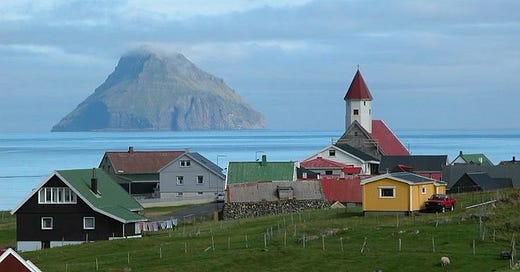



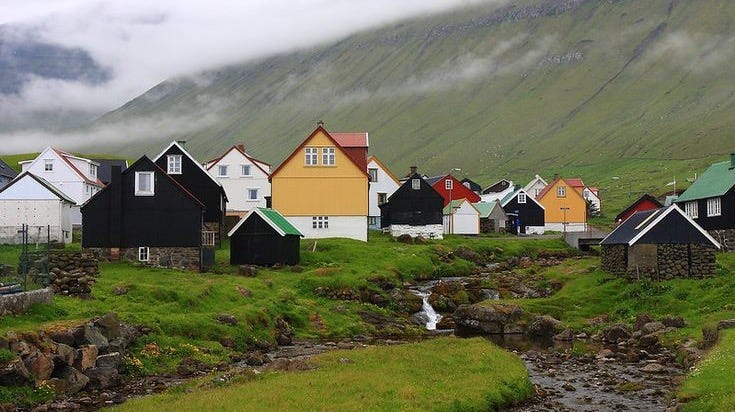
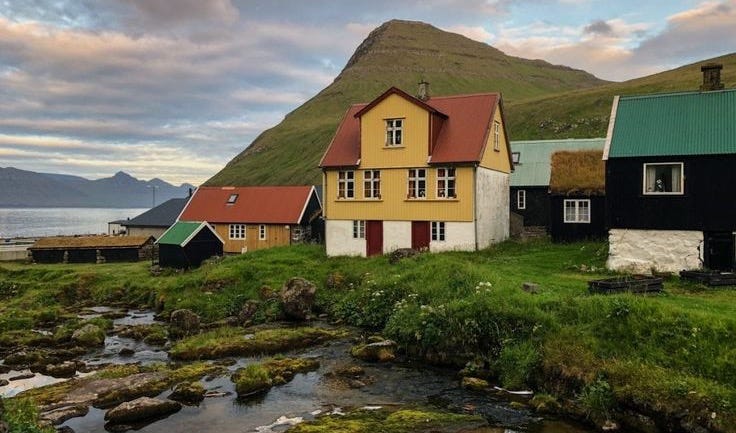
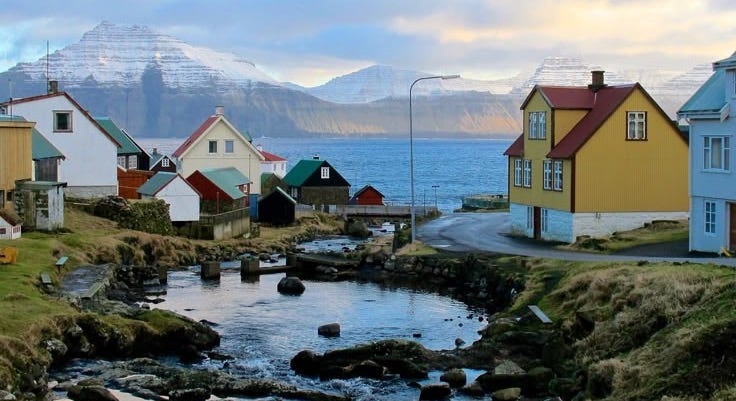
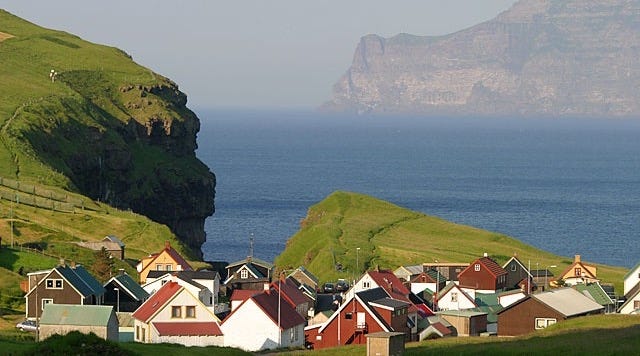
Thank you so much for sharing my essay. I'm glad you read my intent (to say that the artist cannot be separated from their art), and that I didn't intend it to be a take down.
I love your curation in this piece as well. So many interesting books and Substacks to check out. And the Faroe Island photos you chose are gorgeous.